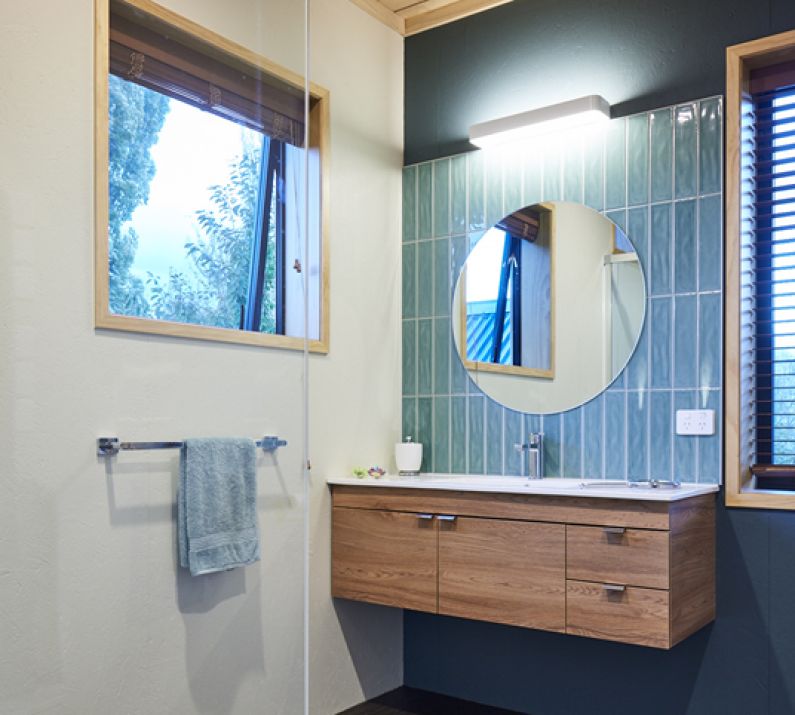Wet Areas with SIPs: Key Considerations and Best Practices

When it comes to designing and building wet areas like bathrooms, kitchens, and laundries with Structural Insulated Panels (SIPs), it’s important to follow specific guidelines to ensure durability, moisture resistance, and overall performance. Below is an overview of best practices for treating wet areas with SIPs, including key recommendations from the Formance Design Guide.
1. Wet Area Showers and Floor Construction
For showers in wet areas, it's advisable to use traditional timber framing with custom-cut EPS insulation. In these scenarios, the Formance floor panels should be terminated on either side of the shower, supported by bearers underneath. This approach allows for proper drainage and accommodates the necessary fall within the shower area.
2. Floor Treatments in Wet Areas
Wet areas such as laundries, kitchens, bathrooms, toilets, and showers require careful floor treatment. The floor must be covered with a moisture-impervious membrane that is coved up at the walls and extends under fixtures like toilet pans. It's crucial to avoid using vinyl tiles, carpet, or clear coatings in these areas. For detailed guidance, refer to Acceptable Solution E3/AS1. 2.12 and the Code of Practice for Internal Wet Area Membranes.
3. Membrane and Decorative Finishes
To ensure compatibility and performance, an appropriate wet area membrane (compliant with AS/NZS 4858 or carrying a current BRANZ Appraisal) should be installed before adding any decorative floor finishes. Suitable finishes include ceramic and stone tiles, strip timber, planked vinyl, and laminate flooring. When using alternative coverings, always verify that they are compatible with the wet area membrane to avoid compromising its integrity.
4. Floor Drains and Sealing
Installing floor drains is strongly recommended wherever possible to manage the impact of any accidental flooding. Key areas for floor drains include under dishwashers, in laundries, and near spa baths. Additionally, ensure that all pipes and penetrations through the wet area membrane are fully sealed to prevent seepage and protect the SIP panels.
5. Wall Panel Bracing in Wet Areas
Formance wall panels can be used as bracing in internal wet areas, such as behind showers and in bathrooms, provided they are protected by a sealed impervious lining. This can include pre-finished linings, vinyl, or acrylic shower linings. For tiled surfaces, a waterproofing membrane that meets the requirements of the NZ Building Code (NZBC) must be used.
In Summary
When treating wet areas with Formance SIPs, it’s essential to follow best practices for waterproofing and sealing to ensure long-lasting performance. By adhering to these guidelines and consulting with appropriate waterproofing suppliers, you can effectively manage moisture and create durable, comfortable spaces. For further details and technical documentation, please refer to the Formance Resources page.






